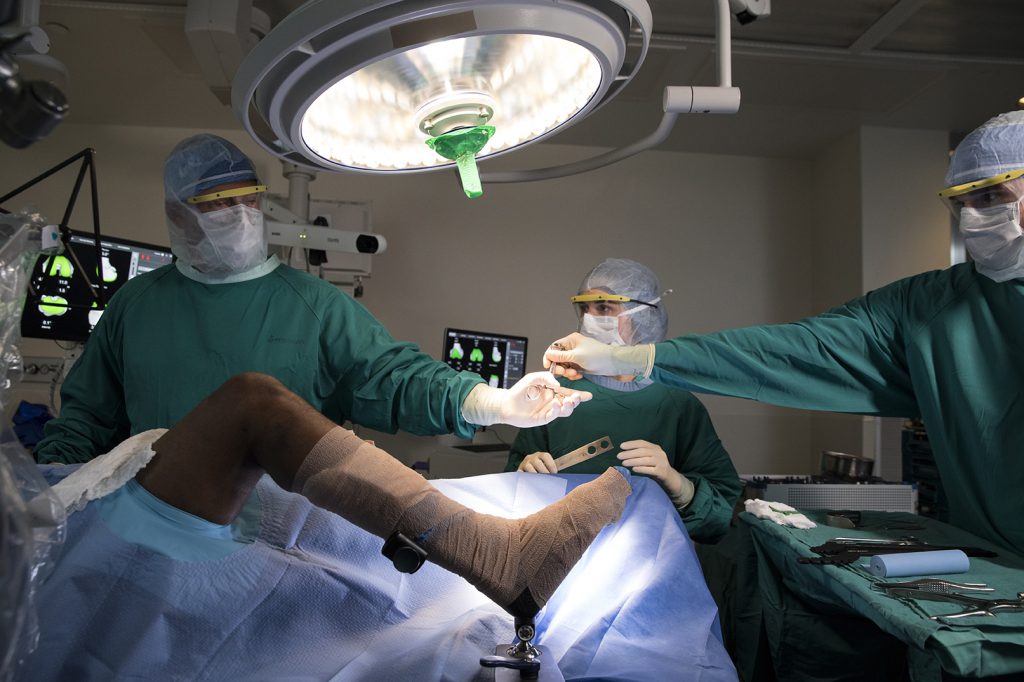We’ve all heard the term “ACL injury” – but what exactly does that mean? Is there any way to prevent it? Chances are unless you or a loved one has first-hand experience with this type of injury, you might need a little refresher course on the ACL – especially as the fall sports season starts to gear up.
The Anterior Cruciate Ligament (ACL) is located between the knee bones. It holds the shin bone and thigh bone from sliding out of place. The ACL can either over-stretch or completely tear when it’s injured, causing immediate pain and oftentimes, inability to fully extend the knee.
The most common causes of ACL injuries include:
- Suddenly slowing down and changing direction.
- Pivoting with the foot firmly planted.
- Landing improperly from a jump.
- Receiving a direct blow to the knee.
- Collision like a football tackle or soccer slide tackle.
According to Dr. Adam Metzler, an Orthopaedic Surgeon specializing in ACL injuries and repairs St. Elizabeth Hospital and OrthoCincy, about 70% of all ACL injuries are non-contact injuries that involve sudden deceleration or change in direction. Sports that require sudden changes in direction include football, soccer, lacrosse and basketball—and athletes in these sports see a higher likelihood of tearing their ACL. Studies have shown that ACL injuries are also more common in women than in men.
“The knee is a complex structure of bones, ligaments, tendons and other tissue that work together,” says Dr. Metzler. “It’s important to get a prompt and accurate diagnosis to determine the severity of the injury. Up to 75% of ACL tears have associated knee injuries that require additional intervention.”
ACL tears are also lengthily injuries – returning to play in competitive sports typically takes a full six to 12-month time period.
ACL Injury Treatment and Prevention
Is there any way to prevent an ACL injury? Not exactly, says Dr. Metzler. However, research suggests strengthening muscles in the legs, hips and core can be effective in reducing the risk of an ACL injury. Additionally, athletes who train to improve their jumping and landing techniques can also reduce their risk of sustaining an ACL injury.
If any injury does occur, a specialist will need to evaluate your injury and determine the best treatment path. While not all ACL injuries require surgical intervention, ACL reconstruction surgery is often recommended if the patient is:
- Young and active
- Suffers from persistent knee pain
- An athlete who wants to continue playing
Additionally, if the patient’s injury causes their knee to buckle during routine activities like walking, ACL surgery is likely necessary.
There are multiple options for ACL reconstruction surgery. Typically, an arthroscope (a thin tube with a fiber-optic camera and surgical tools) is used to allow the surgeon to see inside the patient’s knee during the surgery. Your surgeon will discuss the different types of ACL surgery available and what he or she recommends for your specific injury. It’s important to see a fellowship-trained surgeon with extensive ACL expertise when choosing a surgeon.
St. Elizabeth and OrthoCincy: Your ACL Experts
If you suspect an ACL injury in yourself or a loved one, prompt medical attention is necessary from an Orthopaedic Surgeon. Call (859) 301-BONE to schedule an appointment with one of our specialized ACL experts today.

